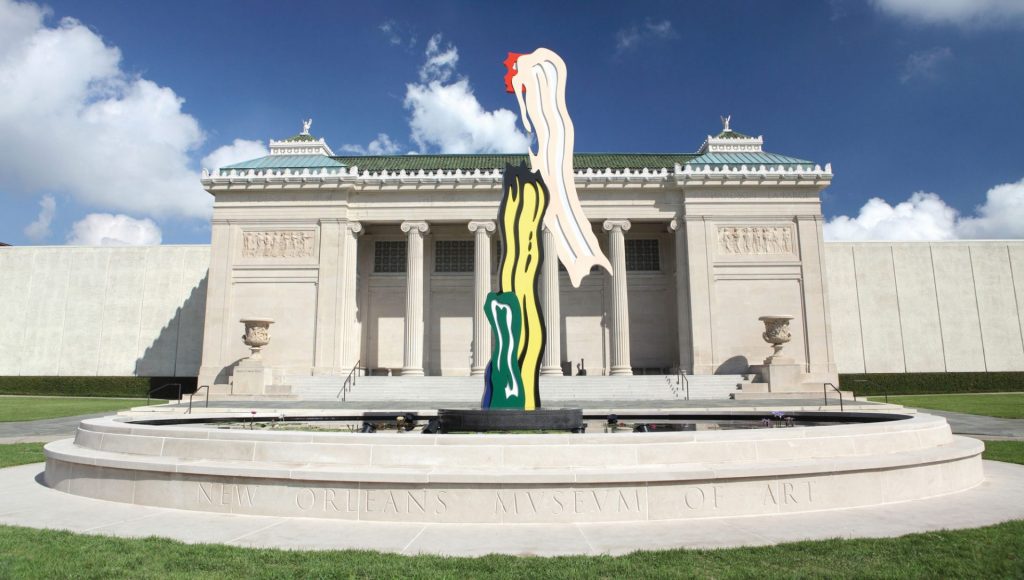
New Study Measures the Public Value of Art Museum Experiences
Research project featuring unique, cross-sectional consortium of 11 museums across the United States explores how art museums contribute to well-being
NEW ORLEANS — Following a large-scale, multi-institutional research project, the Institute for Learning Innovation (ILI) and a consortium of 11 museums across the United States—including the New Orleans Museum of Art (NOMA)—have announced the results of a new study designed to define and measure the value of museums—how they contribute to the overall well-being of visitors—in an empirical, verifiable, and monetizable way. Building on the work of John H. Falk, Founder & Principal Researcher at the Institute for Learning Innovation, the Value of Museums Study was unveiled at the 2023 American Alliance of Museums (AAM) Annual Meeting in Denver, with its findings shared during a panel, “Leaning into Value: Measuring and Monetizing Visitor Experience,” on Friday, May 19. Tracy Kennan, Curator of Education at NOMA, presented at the panel during AAM’s Annual Meeting last month.
According to the Institute for Learning Innovation, researchers have interviewed museumgoers about their experiences over the past four decades. Visitors reported that the benefits of museum visits could be characterized into one or more of four areas of enhanced well-being: personal, intellectual, social, and physical. For this study—data collection for which ran from May through September 2022—the research team hypothesized that by measuring and better understanding the value of enhanced well-being created by museum experiences, it would be possible to: quantify the existing value for current visitors, enhance that value for current visitors, and extend that value to prospective visitors.
This study included prominent art museums across the United States: the Barnes Foundation (Philadelphia); Cleveland Museum of Art; Denver Art Museum; Hillwood Estate, Museum & Gardens (Washington, DC); Milwaukee Art Museum; the Museum of Fine Arts, Houston; Nelson-Atkins Museum of Art (Kansas City, MO); New Orleans Museum of Art; Oakland Museum of California; Saint Louis Art Museum; and the Walters Art Museum (Baltimore). The project’s goal was to build evidence for the societal value—personal, intellectual, social, physical—and resulting economic value and cost-benefits that museums generate through public-facing activities.
A random selection of 1,942 museum visitors from across the participating 11 museums completed a short motivation survey on-site, and a month later, the same visitors were randomly assigned to one of two surveys. One survey asked visitors to rate the degree of well-being they experienced as a result of their museum visit on four dimensions (personal, intellectual, social, and physical), and, if they had experienced enhanced well-being, for how long those benefits lasted (1–2 hours, one day, one week, two weeks, or a month or more). The other survey asked individuals to assign a monetary value, on a sliding scale of $0–$1,000, to each of the same set of well-being-related outcomes.
The vast majority of individuals surveyed indicated experiencing benefits, and most reported that those benefits lasted far beyond the timeframe of the museum visit itself. On average, museum visitors responded that their hour(s)-long visit resulted in benefits lasting one or more days, with many reporting that the benefits lasted weeks or longer. The benefits of these museum experiences were not limited to a single dimension of well-being, as most respondents experienced benefits across all four tested dimensions. The full importance of this fact became apparent when the monetization results were applied: on average, the multiday benefits of an art museum experience were equivalent to $905 per person, per visit in economic value. While this reported value in benefit is high, the study states that the true power and value created by these art museums lies in their collective value, as each institution serves tens to hundreds of thousands of individuals each year. On average, each of these museums annually delivered more than $325 million in well-being–related economic value to its visitors. A cost-benefit analysis was completed, which revealed that the average ratio of benefits created relative to the costs of creating that value was equal to 1,171%, or roughly $12 of benefit achieved for every $1 spent.
The Value of Museums study demonstrates that each of the 11 participating art museums cost-effectively delivers significant societal and economic value to their communities.
“Our research has shown that universal well-being–related values—personal, intellectual, social, emotional, and physical—are strongly correlated with perceptions of a satisfying and successful life,” says John Falk of the Institute for Learning Innovation. “A large majority of the public perceives that they derive these universal benefits following a museum visit, indicating that these museum experiences clearly have societal value.”
“As spaces that naturally foster meaningful encounters with art, rejuvenation, and educational enrichment, museums play a critical and unique role in supporting the well-being of the public,” says a joint statement from the participating museums. “This study, which represents a promising new model for institutional collaboration, has offered a valuable opportunity to hear directly from the communities museums serve across the US, and the findings will help guide our work to continuously enhance the value of the museum experience.”
###
About the New Orleans Museum of Art
The New Orleans Museum of Art is committed to uniting, inspiring, and engaging diverse communities and cultures through the arts. With more than 40,000 works of art encompassing 5,000 years of history, NOMA and the renowned Sydney and Walda Besthoff Sculpture Garden offer innovative experiences for lifelong learning and interpretation. To learn more, visit noma.org.
About the Institute for Learning Innovation
The Institute for Learning Innovation works with individuals, organizations, and communities to develop and support lifelong, free-choice learning as a mechanism for helping solve the major challenges facing humanity.
###
Media Contact:
Charlie Tatum, Director of Marketing and Communications
ctatum@noma.org | 504.658.4103